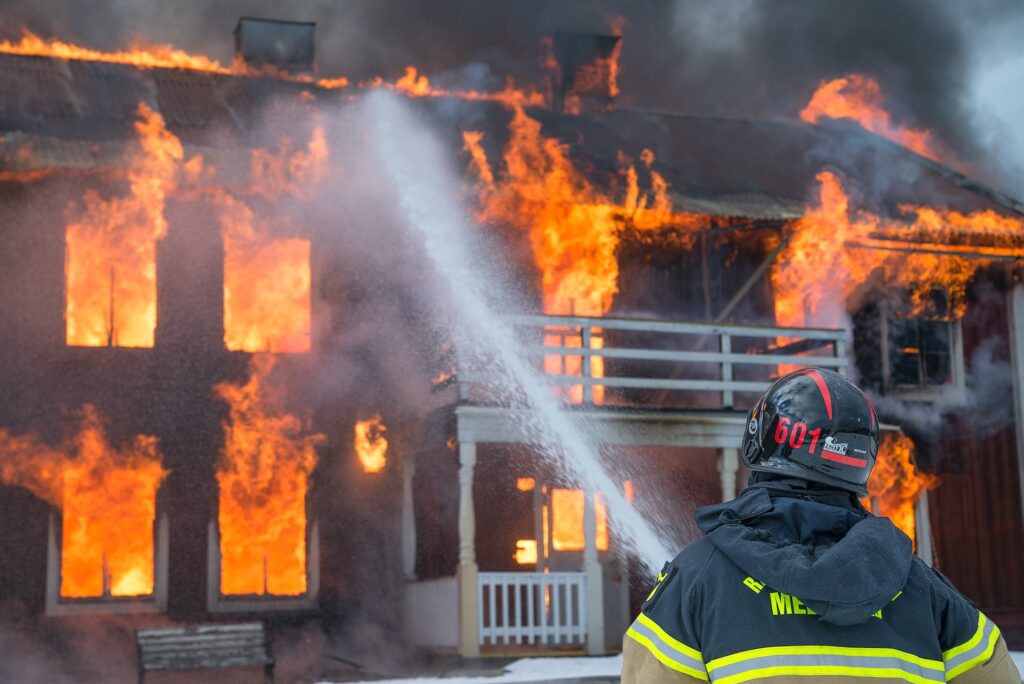Introduction: Fire is a formidable force of destruction that can wreak havoc on homes, businesses, and lives. In the face of this threat, fire proofing emerges as a crucial defensive strategy. In this comprehensive guide, we delve into the world of fireproofing, offering you invaluable insights into how to protect your assets from the devastating effects of fire. From understanding the basics to exploring advanced techniques, we’ve got you covered.
Acusfoc guarantee the qualification of our staff, not only in the machinery and products used, but also in occupational risk prevention training.
Fire Proofing: What Is It?
Fireproofing is the process of making a structure or material resistant to the destructive forces of fire. It involves various methods and materials aimed at delaying the spread of flames, reducing heat transfer, and ultimately preserving the integrity of the protected entity.
The Importance of Fire Proofing
Fireproofing isn’t just a precautionary measure; it’s an absolute necessity. Here’s why:
Fire damage is financially crippling. Fires can lead to loss of life. Fireproofing increases property value. It ensures business continuity. Now that we’ve established the significance of fireproofing, let’s dive deeper into the methods and materials.
Passive vs. Active Fire Protection
Fireproofing strategies can be broadly classified into two categories: passive and active fire protection.
Passive Fire Protection
Passive fire protection involves designing and constructing a building or structure in a way that naturally resists the spread of fire. Key elements include:
- Fire-Resistant Materials: The use of fire-resistant building materials, such as gypsum board and intumescent coatings.
- Fire Barriers: Installing fire-rated walls, floors, and doors to compartmentalize the building.
- Structural Fire Protection: Protecting the structural elements of a building to maintain its integrity during a fire.
Active Fire Protection
Active fire protection, on the other hand, relies on systems and equipment to detect, control, and suppress fires. Key elements include:
- Fire Alarms and Detection Systems: Early warning systems that alert occupants and authorities when a fire starts.
- Fire Sprinkler Systems: Automated systems that spray water to suppress fires.
- Fire Extinguishers: Portable devices for immediate fire control.
Now that we’ve explored the two primary categories of fire protection, let’s look at some specific fireproofing techniques.
Fireproofing Techniques
Achieving effective fireproofing involves employing a combination of techniques and materials. Here are some commonly used methods:
1. Fire-Resistant Coatings
Fire-resistant coatings are applied to surfaces to delay the onset of flames. These coatings expand when exposed to heat, creating a protective barrier. They are commonly used on structural elements like steel beams.
2. Fireproofing Sprays
Fireproofing sprays, often made of cementitious or intumescent materials, are applied to surfaces to provide fire resistance. These sprays can be used on walls, ceilings, and support columns.
3. Fire-Resistant Doors and Windows
Installing fire-rated doors and windows in your building can prevent the spread of flames and smoke. These specialized fixtures can withstand high temperatures for extended periods.
4. Fire-Resistant Insulation
Fire-resistant insulation materials can be used to protect the interior of a building. These materials slow down the transfer of heat, reducing the risk of fire spreading.
5. Firebreaks and Firewalls
Creating firebreaks and firewalls within a structure can help contain fires to specific areas. This is especially important in large buildings or industrial facilities.
6. Electrical Fire Protection
Using fireproof electrical wiring and enclosures can prevent electrical malfunctions from sparking fires. These systems are crucial for maintaining safety in homes and commercial buildings.
7. Fireproof Safes and Cabinets
Protecting valuable documents and assets from fire damage is essential. Fireproof safes and cabinets are designed to withstand high temperatures, keeping your valuables safe.
8. Fireproofing Landscaping
For homeowners, fireproofing landscaping involves using fire-resistant plants, creating defensible spaces, and maintaining a safe distance between vegetation and structures to reduce the risk of wildfire damage.
Fire Proofing: Frequently Asked Questions
Q: How can I determine if my building needs fireproofing?
Fireproofing is essential for all structures, but the level of protection required varies. Factors like building type, occupancy, and local fire codes influence the decision.
Q: Are there eco-friendly fireproofing options?
Yes, eco-friendly fireproofing options, such as non-toxic intumescent coatings and environmentally friendly fire-resistant materials, are available.
Q: Can I retrofit fire protection into an existing building?
Yes, existing buildings can be retrofitted with fire protection measures, including fire-resistant coatings, sprinkler systems, and fire doors.
Q: How often should fireproofing systems be inspected?
Regular inspections and maintenance are crucial. Fire alarms, sprinkler systems, and fireproof coatings should be inspected at least annually.
Q: Are there government regulations regarding fireproofing?
Yes, building codes and regulations typically include fireproofing requirements to ensure the safety of occupants.
Q: What is the cost of fireproofing a home?
The cost varies widely based on the size of the property, the chosen fireproofing methods, and local labor rates. It’s advisable to obtain quotes from professionals.
Conclusion
In a world where the threat of fire is ever-present, fireproofing stands as a formidable defense. Whether you’re a homeowner looking to safeguard your family or a business owner protecting your assets, understanding the principles and techniques of fireproofing is paramount. By embracing passive and active fire protection measures, you can significantly reduce the risk of devastating fire damage. Don’t wait until disaster strikes—make fireproofing a priority and secure a safer future for yourself and your loved ones.
Remember, the investment in fireproofing is an investment in peace of mind and the protection of what matters most.
For more in-depth information on fireproofing, consult trusted sources like the National Fire Protection Association (NFPA), and take proactive steps to ensure your safety and security.

